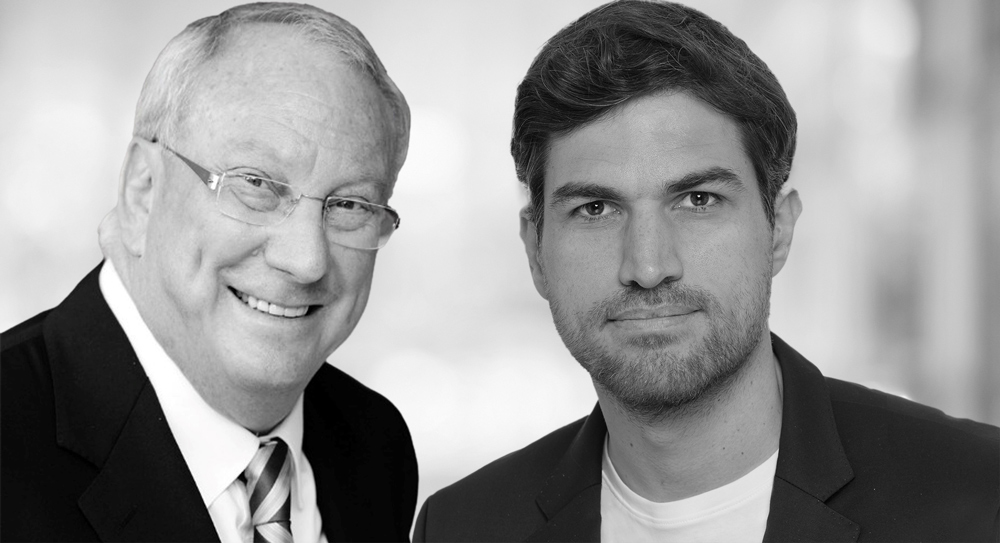IR Profile: Christiian Marriott, Equistone
Following the successful close of its latest fund, on €2.8bn, in just four months, The Drawdown speaks to Equistone partner and head of IR, Christiian Marriott, to find out how the firm executed the raise so swiftly.
The Drawdown: Equistone has just closed its sixth fund on its €2.8bn hard-cap having only been on the road for four months. Given the short timeframe, did you do anything prior to launching to speed up the fundraising process?
Christiian Marriott: We started building our data room at the end of July, which pulled together our track record data. We also commissioned a reference pack of independent portfolio company CEO interviews. This is something we’ve done in the past, but for this raise we did it on a much wider basis, with around 35 CEOs.
We also worked on the regular documents such as the LPA and PPM. The data room was ready and complete ahead of launch because of wanting to execute the fund in a short space of time, and the reference pack does make that part of the process easier for LPs.
Ahead of publishing our PPM in November, we were speaking to our investors to provide an overview of our direction of travel in terms of the fund size and strategy – essentially to let them know it would be more of the same. We kept our LPs very well appraised of the timings so that when we launched in November, they all expected that to be the timetable.
TDD: Since the previous fundraise, have you altered or expanded the investor relations team?
CM: The last raise was carried out by myself and my colleague Mike Hachar, who had recently joined the team as the raise was kicking off. He did a great job on DD requests but he hadn’t been with us for long enough to have established relationships across our LP base. For this fundraise he had three-years more experience which means greater LP relationships and a deep understanding of the substance of the track record and portfolio, so his ability to manage LPs as well as to talk about the portfolio, the strategy and the track record was enhanced.
The other enhancement to the team was Stephan Köhler, who has been with the firm for about 10 years but mainly in a finance role based in Munich. He came over to the IR team ahead of the fundraise which gave us extra muscle and also an IR presence in Germany, which is an important market for us in terms of both investing activity but also some key LP relationships.
TDD: Have you made any operational improvements to ease the fundraising process, such as adopting new technologies or improving systems or process?
CM: We used the same data room provider that we have used in the past. But for this raise we also used TopQ (part of eVestment), as a benchmarking platform. It offers a real-time track record analysis system, which allowed us to do a lot of very quick track record work. It makes slicing and dicing the performance data much more efficient and that allowed us to turn around information requests quickly.
Our lawyers used sharable documents – iSheets – for all of their comments, which meant we could actually log on to their website and go through the notes on the memorandum and LP responses. That moved the game on slightly by using the technology, and allowing us to login to the sheets and run searches for specific terms that were under discussion.
TDD: You worked with Evercore as a placement agent for this fund. We have started to see more established firms raise funds without using a placement agent. Did you consider raising this fund alone? And what was the reasoning behind using Evercore specifically?
CM: We look at the need for a placement agent every time, and we re-underwrite the decision to use one by looking at what we think the value-add is going to be and what we’ll be paying for that. I think there is a lot of evidence that in an oversubscribed raise, having a good advisor will help you manage the very difficult art of right-sizing each investor’s commitment.
We had strong evidence of Evercore as a group who has been successful with a number of other managers, including one group in the US with a similar LP base and fundraising strategy.
We had a sense that the fundraise was going to be successful but, having that sort of strategic advisor on board, gives you a different sort of advice, beyond selling and distribution.
We knew that there was going to be strong LP support and we knew there were a lot of new LPs knocking on the door. For the advisory side, it’s about making sure you’re doing it right. And then I think it’s speed of execution – if you can get your fund raised in four months rather than six months, that will clearly be advantageous to your partnership.
There’s probably a less tangible benefit but an important one in doing things the right way and making sure that those conversations with investors that can be quite difficult are done sensibly and in a good spirit. It’s about having people interface with our investors with integrity.
TDD: A large proportion of this fund’s investors were existing (75%), but given there was so much demand, why were a quarter of the investors new?
CM: We had some existing investors that couldn’t re-up, and we knew from early on that would be the case. Investors have their own programs to accommodate – we had one that was pulling out of private equity altogether, and we had another with a very mandatory cut-off on fund size, which prevented them from investing.
We’ve always had quite a small LP base – we raised our €2bn Fund V from 43 investors and that is clearly quite concentrated, although it gives a nice, intimate feel to our investor relationships.
We had around 35 LPs that did want to re-up. We could have raised more than €2.8bn with just those. But then we would have a €2.8bn fund with 30-something LPs, and that felt like a backward step from a diversification standpoint.
The challenge we’ve always had is that we appeal to the larger LPs because they’re able to put fairly sizeable tickets into a mid-market fund.
We brought in around 20 new LPs, taking us to a total of 56 investors, which feels materially better than 43 (which we had previously).
Interestingly, we had the same new investor percentage in both Fund IV and Fund V – 75% of capital from existings and 25% from new investors, and it just feels right.
TDD: What was the most challenging aspects of raising this fund in comparison to its predecessors?
CM: It was a smooth process, but doing a four-month fundraise with 20+ new LPs coming in is pretty intense; we hosted around 80 on-site due diligence meetings including operational DD, which is a large number for a short space of time.
Those on-site DD meetings were crammed into almost a four-week period. We ran them across London, Paris and Munich. But it’s great to get the raise done quickly and not disrupt the business.
We want to be as open as possible with investors and as available as possible, so we were really happy to have that level of DD. It was just the logistics of making that happen; it was really challenging but it worked.
Beyond that, the LP questionnaire response was pretty straightforward. The team were able to turn things around quickly – it was just getting through the process itself which was the biggest challenge.
TDD: And what were the LPs most commonly asking you about during this process?
CM: How much money are we going to raise! Investors are seeing larger fund sizes being raised at the moment. There was a lot of focus on fund size – I think some people were definitely worried that we might double ours.
There was also a lot of focus on competitive landscapes, and making sure that our target equity range wasn’t really changing from Fund IV to Fund V to Fund VI. With 25 to 30 investments in each fund, a small change in the average equity cheque could translate to a big increase in the size of the fund and the amount of capital you end up deploying.
We had our annual meeting very shortly after the fund close and our CIO pointed out that if you look at our last three years and take the average amount of capital deployed, you have a figure that would equate to investing 85% of Fund VI in just over four years.
Right-sizing the fund was a crucial consideration for our LPs and just as important for us to maintain our discipline.
TDD: Given Equistone’s strong performance and success, what has that meant for your role as head of investor relations?
CM: Our LP base has increased relatively since I arrived 11 years ago; from 25 in Fund III to now 56 in this fund. And of course back then we had Barclays as a cornerstone investor.
And there’s a whole universe of LPs out there we’re developing relationships with, which shows we’re a bigger and a more high-profile manager than before. We had virtually no US footprint when we were part of Barclays, and I’m not sure if we really needed a US presence back then.
But, for my job now, I’ve had to be disciplined about how many relationships I can legitimately manage. Going forward I will look after the 15 LPs who make up our Advisory Committee, plus a handful of other significant relationships, while Mike and Stephan have relationships with the rest of the LP base. Because we are a busy firm – we do a lot of deals, a lot of exits, as well as a lot of build-ups and I attend as many IC discussions as possible, as well as attending the firm’s Management Board meetings – I need to make sure I know what’s going on.
My day-to-day IR management job is enough of a full-time job, so when you’re fundraising you have to cram in so much more and make it all fit somehow. There’s a lot to do in terms of keeping those relationships managed and keeping on top of what we’re doing as a business and how we’re investing.
TDD: As private equity becomes an increasingly popular asset class, how is that changing the fundraising process and investor relations role moreover?
CM: You’ve got to think about your offering and how you can be efficient. You have to be really well prepared. Also, it’s vital your deal team is in the right frame of mind. Even with the fundraising environment being so strong, it doesn’t mean you can raise money without letting your LPs do proper and meaningful due diligence.
It’s also about keeping your feet on the ground, and that’s a key part of what IRs in successful firms do. Then it all it comes down to making sure you’re ahead of the game. For instance, we were completely ready for the sophistication of the operational due diligence for this fundraise. It’s easy to get knocked off your stride if you’re not prepared.
Profile:
Categories: ProfileFundraising & fund structuring






